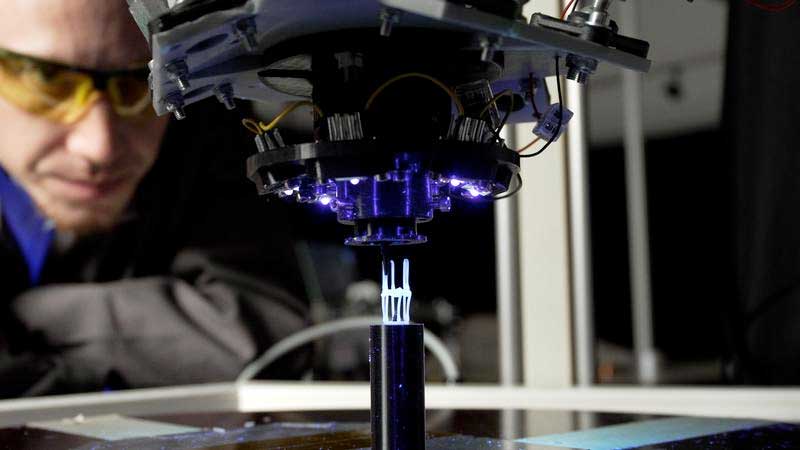Munich University of Applied Sciences and the NewSpace company DCUBED have set themselves the ambitious goal of being the first in the world to develop 3D printing directly in space to market maturity.
As part of the two-year MASS-PEX project, which was launched in January 2024, the partners will drive forward the practical research and further development of technologies for production in space, known as in-space manufacturing (ISM). The plan is to develop and test a complete system for manufacturing structures from photopolymers using 3D printing in space. For the first time, these structures will also be reinforced with fibers, which will significantly increase their strength and rigidity. These can be used for large antennas or as support structures for satellite solar panels, among other things. Until now, these have been produced on earth and transported into space by rocket – a very error-prone and expensive procedure.
Research and industry benefit
In the long term, the results of the research project should open up new potential in space for industry and research. The total volume of the project amounts to almost one million euros. The funding is part of the Bavarian Space Research Program, with which the state government supports the development of space technologies to overcome future social challenges. “These innovations from Munich University of Applied Sciences and DCUBED will change the way we think about the design and use of satellites and ultimately open up new ways of designing space systems,” explains Markus Pietras, Professor of Aerospace Engineering at Munich University of Applied Sciences, who is responsible for the project.
Rocket launch north of the Arctic Circle
At the same time as receiving government funding, the HM student research team was able to qualify for another rocket launch in the Swedish-German space program with their work. The research project PERSIS (Photopolymeric Extrusion of Reinforced Structures in Space) convinced the jury. This gives them the opportunity to carry out experiments on printing structures in open space using a 3D printer in a research rocket. The rocket launch will take place at the Esrange Space Center, north of the Arctic Circle in Sweden.
From laboratory to in-space manufacturing
Space research at HM can already look back on a number of successes in the field of ISM: In 2020, a team of students successfully tested their 3D printing process in the weightlessness of a parabolic flight in collaboration with the European Space Agency (ESA). At the beginning of 2023, a group of HM scientists used a 3D printer in a research rocket to print a structure in open space for the first time. Technologies for manufacturing structures in space are also currently being developed at HM in an ESA-funded research project.
Subscribe to our Newsletter
3DPresso is a weekly newsletter that links to the most exciting global stories from the 3D printing and additive manufacturing industry.






















